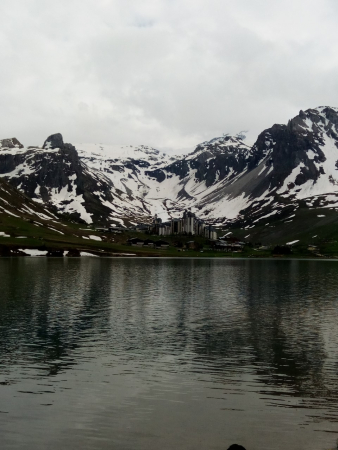
Nature standard ?
La modernité en ses confins
Représentations culturelles ― design et architecture comme projet politique ― soft-power ― histoire environnementale ― histoire des sensibilités ― mythe du progrès ― ontologies ― modes d'habiter ― standardisation
Pour s'adapter à un milieu, les humains développent nécessairement des représentations collectives de la nature, légitimant ainsi leurs relations au vivant. Ces représentations sont médiatisées par des instruments et techniques socialement partagés. Cet ensemble de rapports au milieu, à la fois symboliques et matériels caractérise nos modes d'habiter, nos façons de concevoir des architectures, des objets et de les utiliser quotidiennement. L'imminence des limites atteintes par la non-durabilité de nos modes de vies occidentaux impose une contre-enquête sur nos modes d'habiter et sur les compréhensions et représentations culturelles de la nature qu'ils portent ou favorisent. Ces modes d'habiter ne sont pas immanents, ou strictement rationnels, mais ont été influencés par des contextes historiques, des décisions politiques et leurs applications.
Il existait au début du siècle dernier une grande diversité de modes d'habiter en France, issus d'une multiplicité d'adaptations aux zones géographiques, climats et topographies du pays. La période de la reconstruction au lendemain de la Seconde Guerre Mondiale, a favorisé l'application des théories modernes de l'habiter par le design, l'architecture et l'urbanisme. Ces disciplines, travaillant à l'intersection de problématiques esthétiques, ergonomiques et techniques contribuèrent à réorganiser à une échelle nationale les modes de vies selon des normes et concepts précisément établis. Ces disciplines ont-elles contribué à façonner notre représentation collective actuelle de la nature en standardisant les divers rapports au milieu existant alors ? Comment cette influence opère-t-elle ? Dans des lieux où les représentations de la nature sont nombreuses et clivantes, comment habite-t-on ensemble une nature multiple ?
Nature Standard ? Modernity within its limits.
Axis "Technical systems"
Cultural representations ― design and architecture as political project ― soft-power ― environmental history ― sensibilities history ― myth of progress ― ontologies ― ways of living ― standardization
To adapt to their environments, humans develop collective representations of nature. These representations are mediated by techniques and tools that are socially shared. These relations to the environment, both material and symbolic, are what defines our ways to inhabit a place, our ways to conceive architectures, objects, and use them everyday, systematically (but not always consciously) depending on a precise interpretation of what nature is. Our contemporary and occidental ways of living aren't strictly rational, but have been influenced by historical contexts, political interpretations of nature, political decisions and their applications. The limits reached by our occidental unsustainable ways of living require an enquiry on the collective comprehensions and representations of nature our everyday objects and architectures support and favour.
Many different ways of living existed in France at the beginning of the last century. This diversity of objects, architectures, cultures came from as many different adaptations as different geographical zones, climates and topographies of the country. The period of the reconstruction after the Second World War gave politicians, architects and designers a unique opportunity to apply their modernists theory to design a universal way of life. These disciplines, working at the intersection of esthetical,ergonomical and technical problematics, contributed to reorganize on a national scale ways of living according to precisely predefined norms and concepts supposed to unify and simplify french ways of living. By doing so, did they also contribute to shape our contemporary representations of nature, by standardizing the diversity of relations to the environment that existed before ? How does this influence operate ? As ecological issues interrogate the cultural hegemony of occidental ways of living, how can we now inhabit together a multiple-faced nature?
Projet porté par / project by : Delphine Hyvrier, doctorante UJM/Cité du design


